Christ Church, Broadway
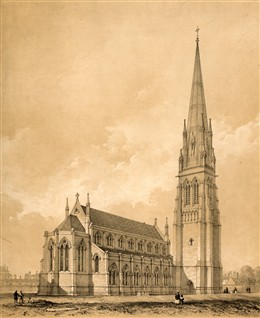
Christ Church Broadway
Copyright Westminster City Archives
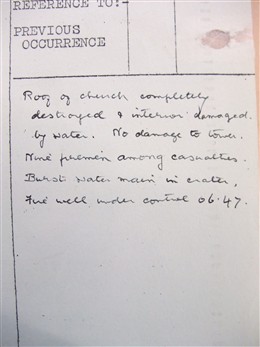
ARP report, Christ Church Broadway, 17 April 1941
Copyright Westminster City Archives
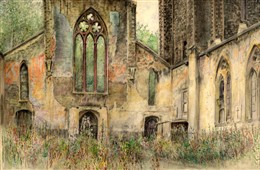
Ruined interior of Christ Church Broadway, RG Mathews (1946)
Copyright Westminster City Archives
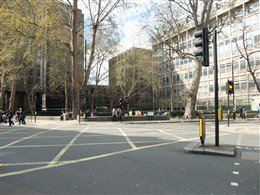
Christ Church Gardens today (view from Victoria Steet)
Madeline Cole
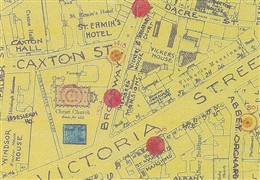
Bomb Map: Christ Church Broadway
Copyright Westminster City Archives
Christ Church Broadway site
17 April 1941
By Madeline Cole
The northwest corner of Broadway and Victoria Street SW1, which is now a small park, does not appear at first glance to have been the former site of church grounds. The site had long been a house of worship, but a brand new church - Christ Church Broadway - was commissioned in 1841, designed by Gothic Revival architect Ambrose Poynter and completed in 1843. It was almost entirely destroyed during the Blitz.
In the early hours of 17 April 1941 - during a night raid in which the Luftwaffe dropped 890 tons of high explosive bombs and 50,000 incendiaries - a shower of incendiaries fell on and around Christ Church. ARP wardens put most of these out but fire took hold on the Church roof and just above the altar. The Church organ was also set alight and soon Christ Church began to burn out of control.
The next few hours were chaotic. The firemen managed to save the church tower, but not the roof. The altar was unreachable. The wardens, some of whom were women, bravely darted in and out of the building as burning debris fell inside and saved its altar pieces and Bible.
Whilst attending the blaze - using 100 ft ladders and water hoses - the fire service crews were then hit by a single high explosive bomb, killing one fireman, seriously injuring several others and smashing their equipment. The blast reportedly blew a wheel from one of the fire service pumps across the street, hitting a bank opposite.
Between 3.30am and 3.34am, wardens reported that high explosive bombs had fallen and requested an ambulance for the injured firemen. Four minutes later, they sent the request again, this time reporting the fall of an oil bomb.
At 6.02am, the ARP wardens officially reported the first death: "parts of skull. 1 arm. Pieces of body found at Broadway. Believed to be fireman". The wardens placed the remains in a bag to be collected by officials. By then the fire was out. Less than an hour later the ARP estimated that nine firemen had been injured, one of whom had died. They also reported that part of Broadway was blocked by debris and that water from fire hoses and a burst water main had damaged the church interior. The final death toll was two fireman.
The night raid of 16-17 April 1941 - known to Londoners as 'The Wednesday' - was one of the heaviest of the London Blitz. 1,180 people were killed and 2,230 others were seriously injured. 19 other churches were either lost or badly damaged across London that night. Christ Church remained an empty burnt-out ruin for the rest of the war. A surface shelter was built in Christ Church Gardens and used by locals during subsequent raids.
The weed-covered interior of Christ Church was captured in a series of evocative watercolours by war artist R.G Mathews in 1946. The remains of the Church tower, as well as the adjoining vicarage, were torn down in 1954. A telephone exchange and a new Post Office were opened at the north end of the site in 1962. Today, a small sign in the corner of Christ Church Gardens recalls the Church's Blitz story.